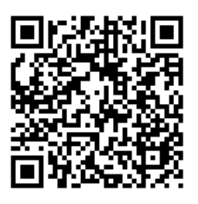Technology
30 April, 2025
- Demand for gold used in technology was flat y/y at 80t during Q1
- Electronics demand rose 2% y/y to 67t, with AI-related applications providing ongoing support
- This was countered by a drop in gold used in other industrial applications and a continuation of the long-term decline in dental demand.
| Tonnes | Q1'24 | Q1'25 | Year-on-year % change |
|
| Technology | 80.2 | 80.5 | 0 |

|
| Electronics | 66.0 | 67.0 | 2 |

|
| Other Industrial | 11.9 | 11.3 | -5 |

|
| Dentistry | 2.3 | 2.1 | -6 |

|
Demand for gold used in industrial applications held steady during the first quarter of 2025. But uncertainty around the imposition of tariffs around the world is likely to cause the sector significant volatility in the near term. Some frontloading of electronics shipments from the Far East into Europe and the US – in an attempt to avoid tariffs – has been noted, as has a rebound in the consumer electronics market as buyers look to make purchases prior to any price hikes. At the time of writing, some electronic devices have apparently been exempted from additional tariffs, but this situation is likely to change, adding to the uncertainty and volatility in the sector. Additionally, some large chip makers such as Nvidia1 and TSMC2 have announced they will commission manufacturing facilities in the US.
Such an uncertain environment makes it difficult to pin down forward-looking expectations and may make demand data more susceptible to future revision.
Electronics
Gold demand in the electronics sector grew by 2% y/y in Q1. Demand for AI-related apps and devices remained strong, supported by new product launches in China. The Semiconductor Industry Association also reported healthy worldwide y/y sales figures for both January and February.3 However, manufacturers are feeling the pressure from record gold prices. Our fieldwork suggests that some are seeking ways to cut material costs as a matter of urgency. In the PCB sector, for example, some chip makers are apparently looking to optimise metal layer formulations in order to reduce costs.
Gold used in Light Emitting Diodes (LEDs) grew slightly during Q1. This was driven, in part, by panel manufacturers and consumer device makers stockpiling to mitigate tariff disruption. However, this is expected to be short-lived as capacity cuts are likely during Q2 and beyond. Demand in sensor applications, such as biosensors, advanced automation systems, and big data applications remains healthy.
AI-related applications drove growth in memory chips and semiconductors during the quarter. Ongoing demand for technologies such as AI server memory in both China and the US were key to growth. This should continue into Q2 as AI-enabled smartphones and PCs are launched, with penetration rates potentially reaching ~30% by the end of 2025. Separately, the NAND flash market has seen inventories fall to healthier levels, improving the recent over-supply situation.
The wireless sector saw a modest decline in demand during Q1. Supply chain adjustments, which lowered inventory levels, meant orders in this sector were relatively flat y/y. Manufacturers remain cautious in their forecasts for consumer electronics, but continued adoption of WiFi-7 should underpin wireless demand in the coming quarters as the shift from WiFi-6 requires a significant uplift in power amplifiers per unit. Other areas of demand for wireless infrastructure, such as low earth orbit satellites (LEOs), may be less impacted by tariffs, so offer further hope for demand in the sector.
Finally, the Printed Circuit Board (PCB) sector registered growth during the quarter. Although Q1 is traditionally a low season for PCBs, the robust demand was thanks to a number of rush orders from consumer electronics manufacturers and ongoing strength from AI applications. However, the overall market sentiment is becoming increasingly cautious.
At the aggregate level, three of the four major electronics fabrication hubs around the world saw gold demand either flat or higher y/y during Q1: Japan - 19t (+1%); South Korea – 6t (0%); and Mainland China and Hong Kong SAR – 19t (+5%). Meanwhile, the US fell to 17t (-1%).
Other industrial and dentistry
Gold used in other industrial and decorative applications (primarily gold-plated items and jewellery, as well as gold thread used in traditional Indian clothing) was down 5% y/y in Q1. Meanwhile, the ongoing decline in gold used in dentistry continued with a 6% y/y drop in volumes to 2t.
